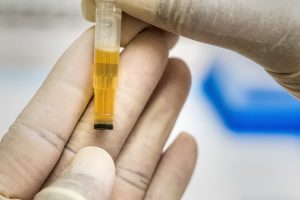The dermis or skin represents the most significant external organ in the human body. Its size and function make it prone to be attacked by bacteria and other pathogens, leading to dermal defects and damage. Regarding its repair, topical antibiotics play a crucial role in restoring damage to the dermal layer, rashes, and cracks, among other functions. However, using the medication without the proper guidance from medical professionals may cause allergies or other side effects.
What are Topical Antibiotics?
A topical antibacterial is a group of medicines produced as creams and ointments for treating microbial dermal defects. It belongs to the broader antimicrobials class and is connected to substances known as antiseptics.
It is crucial to remember that bacterial microbicides and antiseptics are not the same things. Antiseptics interfere with the activities of the bacteria and other microorganisms without killing them, while antibiotics may stop or destroy bacterial activities.
The product is available for purchase depending on the body parts they will be applied to and the illnesses one will use to treat.
How do Topical Antibiotics Work?
The human body’s largest organ, the dermis, performs several vital tasks since it is a barrier that prevents harmful microorganisms from penetrating the body’s interior. Due to the bacteria’s ability to enter an open wound due to dermal injury, the risk of infection is enhanced. The medication is applied to the dermis to kill or alter the growth of any bacteria and pathogens that may be present. Using the correct antibiotic to treat any dermal condition is crucial to avoid worsening the situation. Therefore, it is essential to seek the help of a professional.
How is a Topical Antibiotic used?
The cream and lotion antibiotics treat microbial defects of dermal conditions, including eczema and leg ulcers. Additionally, the products remove the Staphylococcal carrier and eye injuries in newborns, kids, and adults. It also treats infantile dermal problems like impetigo and scalp dermatopathological conditions. When ingesting medications, such as cephalosporin, it is administered to manage acute bronchitis and ear defects, especially at the middle level, acute sinuses, acute urinary tract defects, acute skin infections, and acute bronchitis.
How effective is a Topical Antibiotic?
In terms of effectiveness, these microbicides are balanced since one can use some medications to treat primary conditions while others can treat secondary conditions.
For instance, some medications can treat or prevent minor conditions such as cuts, scrapes, and burns.
Furthermore, the remedy is effective on minor cuts because the condition is self-healing; therefore, applying an antibiotic directly to the wound may hasten the healing process.
Regarding secondary defects, some microbicides effectively treat or prevent conditions such as eczema and leg ulcers. Even though most secondary defects take time while using these medications, they are still effective and convenient. Antibiotic effectiveness can also be influenced by how frequently you use the drug.
If you’re a regular medication user, they will be less effective because the bacteria can adapt and create resistance mechanisms to defend themselves from the medication.
Examples of Topical Antibiotics
Common popular bacterial medications include mupirocin, Altabax, Siverdene, Bacitracin, Neosporin original, Bacitraycin plus, Sumadan, Klaron, and Sulfamylon. Other additional examples include; Emcin clear, Busid (fusidic acid), Xepi, Neomycin, and Meclan. Each of these antibacterial medicine has distinct characteristics and properties that enable them to be used for a particular function.

Which is the Best Topical Antibiotic?
The best antibiotic will depend on the condition you want to treat and its susceptibility to cause allergy. For instance, the triple antibiotic is beneficial for mild skin injuries.
The famous triple medication of Bactrian, Polysporin, and Neosporin work together to ensure that the skin is healthy. You can use oral antibiotics if you don’t want to use cream or lotion medications, and for dermal sores and rashes, the recommended remedy is penicillin.
Due to its superior ability to destroy the pathogens that generally cause urinary tract infections, bronchitis, and pneumonia, penicillin is typically more successful than other ingesting medications.
Is Antibiotic cream Better than Oral?
The ideal category of effective medication will depend on the condition’s location, whether the bacterial infections are inside the body or dermis. When the condition is external, antibacterial creams and lotions will be the most effective medications since you can directly apply them to the skin to help prevent infection.
Likewise, when you have conditions such as diarrhea, stomach pains, and vomiting, you will require oral medications since they take a shorter time to function and are the most suitable.
However, regarding how effective each work is concerning time, an ingested antibiotic will work better since digestion and absorption takes a few hours. When it comes to antimicrobial medications, applying the medicines will take time because it requires time to interact and react with the bacteria.
For instance, treating a severe skin condition such as acne may take six months to recover completely.
How long should you use a Topical Antibiotic?
Although there is no predetermined time limit on how long you can use topical treatments, using them as infrequently as possible is recommended to lower the likelihood of microbial resistance.
For instance, doctors may recommend medications for 3 to 4 months if a patient has a dermal disease like acne.
A dermatologist will then decide whether or not one still needs to take them. Some people with severe acne may need to take the medications for six months or more. As a result, how long one has to take the medicines depends on how severe the ailment is and how well the drug works.
Topical Antibiotic Types
These medications are readily available and have many distinct brand names. Typically, they are categorized according to their function, and each kind of bacterial biocidal is only effective against particular parasites or bacteria. For this reason, various products are used to treat multiple defects. Some of the most common varieties of bacterial microbicides are:
Penicillin
Penicillin is a class of medications that works against a variety of microorganisms. This type of antibiotic functions by subtly rupturing microbial cell walls and interacting with the peptidoglycans. The peptidoglycan functions by maintaining the structural integrity of microbial cells. Additionally, it interferes with the peptidoglycan by blocking their pores, and as a result, the bacterium cannot perform activities that require pores.
Tetracycline
Tetracycline treats microbial defects affecting the dermis, eye, lymphatic system, intestinal, vaginal activities, urinary systems, and other conditions transmitted by ticks, lice, mice, and infected animals.
One can also use it to treat acne when combined with other drugs. In addition, the drug can be used to treat anthrax and certain types of food poisoning.
Macrolides
This type of medication help treat defects caused by H. pylori, atypical mycobacteria, soft tissue, respiratory, and Sexually Transmitted Diseases (STDs). The product is also an ideal substitute for those with a penicillin allergy background. Examples of macrolides are erythromycin, azithromycin, and clarithromycin, among others.
Mupirocin
Mupirocin is an antimicrobial lotion or cream used to treat minor dermal conditions. It is occasionally used to treat childhood diseases like impetigo. Additionally, it also functions by eradicating microorganisms that cause particular ailments. Mupirocin is also used to treat conditions bought on by the methicillin-resistant staphylococcus bacteria.
Most of these microbial conditions in hospitals happen to patients who are already unwell. Therefore, the disease might infect other people and be difficult to treat. With mupirocin, treating people infected with the bacteria is possible since it aids in preventing the pathogen from affecting other patients.
How to Apply a Topical Antibacterial
When applying a lotion or cream antibiotic, one needs to read all the instructions on the product packaging or follow the doctor’s advice. Ensure that the hands are clean before one starts to use the medication. One should also prevent the medicines from penetrating the mouth or eyes. Start the procedure by washing and drying the infected area and then apply a small quantity of the substance in a thin layer to the dermis, typically at least three times every day or as the doctor instructs. Monitor any improvements around the infected area, and if there are no improvements or side effects, one can go back to the doctor and seek other alternatives.
The Side Effects of Topical Antibacterial
Medication use could save one’s life if one develops an infection. However, taking the medication when one doesn’t need them might also be hazardous and cause side effects. In addition, these medications are less likely to be functional when one requires them the most and the more often one uses them.
Ingesting them might upset one’s stomach and result in vaginal contamination, vomiting, and stomach pains.
They can also trigger allergic reactions such as breathing difficulties, rashes, swelling, and itching.
According to the WebMD medical center, almost one in five visits to the emergency room are due to bacterial biocidal side effects. Creams and lotions containing antibiotics might also delay wound recovery. Additionally, they can lead to itchiness, blistering, swelling, redness, and edema.
Frequently Asked Questions (FAQs)
While one can purchase certain medications without a prescription, most need one. A few proper over-the-counter medications include bacitracin, which is applied to the dermis to prevent conditions from penetrating through minor scrapes, wounds, burns, and wounds. Another example is neomycin which is a moderate numbing agent. Additionally, over-the-counter antimicrobial like benzoyl peroxide is an option for people with mild acne.
Yes, Vaseline can be classified as a topical lotion because it contains petrolatum mineral oil that one may use to treat dermal conditions such as eczema, mild burns, scrapes, and cuts. Additionally, the formulation of Vaseline is employed to cure or prevent cracked dermis and chapped lips and shield the dermis from the wind and cold weather impact. In addition to avoiding dermal irritation from the bladder or gastrointestinal incontinence, petroleum jelly helps seal out moisture.
As long as the antibiotic is legitimate or produced by a renowned company or medical center, it is safe to use. Typically, topical antibiotics should only interact with the bacteria and other pathogens by destroying them, blocking their pores, or inhibiting their growth. In addition, they should not react with an individual’s body to create worse defects than those treated.
Yes, depending on the condition or illness, most medications need one to go to a medical center and have a doctor prescribe the correct type and quantity of the medications. The reason the prescription is significant is to assess a microbicide suitable according to one’s condition and susceptibility to allergies and other side effects due to some elements in the product. Additionally, prescription helps one to consult the professional directly regarding the causes of the defects and other tips to prevent them.
Even though microbicide cream or lotion works effectively to ensure the dermal layer is smooth and prevents it from drying or getting cracks, lotion provides a superior medication. The lotion’s thick oil formulations help trap moisture and are more effective for the severely damaged dermis. For instance, ointments like Aquaphor and eucerin provide a soothing defense against dry, cracked, or flaking dermal layers. The medication can also assist with psoriasis and eczema patches more effectively.
Since most microbicides contain mineral oils as an ingredient, their absorption rate through the dermal layer is very low. In addition, the primary purpose of medication used on the dermis is to interact with the various bacteria and pathogens by blocking and interfering with the pathogens damaging activities. Therefore, if microbicides could be absorbed through the dermis, they would be less effective since the medication is to work on the exterior part of the dermal layer.
While there is no set time restriction on the period one can use microbicides, it is advisable to use them as little as possible to reduce the chances of microbial resistance. For instance, doctors prescribe medications for three to four months if one has a dermal condition such as acne. After that, a dermatologist will determine if one still needs to take them.
For at least six months, some patients with severe acne may be required to take microbicides. Therefore, the period one needs to take the medication depends on the severity of the condition and the responsive nature of an individual. If the medicine does not work or creates side effects, doctors may also recommend using azelaic acid cream or gel, especially for conditions such as skin inflammation and acne.
This medication category works on the dermal layer’s protection and repair. The most effective antibiotic lotion contains polymyxin, neomycin, and bacitracin, which helps suppress microbial growth by sealing its pores. Additionally, most creams work only for microbial conditions, not fungi and viruses. Therefore, if the medication is misused, it may reduce its effectiveness.





